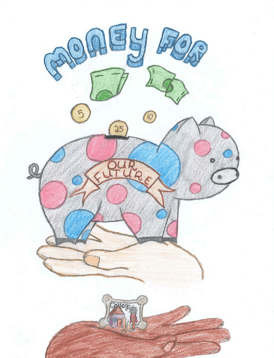Use Financial Literacy Month to Deepen Your Relationship with Clients
 How have you used Financial Literacy Month to help your clients and deepen your relationships? April offers an excellent opportunity to discuss the importance of financial literacy with your clients and the heirs of their wealth. A natural time of renewal and re-engagement, this period also has many programs associated with it, which help create accessibility to untapped topics with your clients.
How have you used Financial Literacy Month to help your clients and deepen your relationships? April offers an excellent opportunity to discuss the importance of financial literacy with your clients and the heirs of their wealth. A natural time of renewal and re-engagement, this period also has many programs associated with it, which help create accessibility to untapped topics with your clients.
Originally called “Financial Youth Advisory Month’, it was started to help children understand the importance of financial literacy at a young age. Initially, that meant financial literacy programs in schools and encouraging creative interpretations of financial literacy by students, using a poster contest called “Be Money Wi$e” (pictured above). Now it’s used to engage Americans of all ages and teach them how to use and maintain healthy financial habits.
Here are some ways you can leverage this time of year to build upon your relationships with clients:
Outline your steps to financial wellness: Financial Literacy Month presents steps to financial wellness on the homepage of the website, but this is likely different than your approach with your clients. What does financial literacy mean to them and their relationship with you? If you don’t have these steps outlined as part of your onboarding process already, take some time to map it out now with the vision of your business in mind. Understand how these steps relate to your clients’ situations based on their personal financial goals and stage of life. Then allow it to become a constant reference point for you both, by using it as a tool to check in with clients throughout the relationship.
Use it to figure out how your clients connect with money: Everyone’s relationship with money is different, though most of them share a certain complexity. These steps to financial literacy offer abundant opportunities to discover more about your clients’ relationship to their money in slightly different ways than you may have thought to previously. This will provide added insight into both their stated goals as well as goals they might not yet be aware of.
Look at the stats differently: Your clients might have resistance to hearing a lot of statistics about investment strategies and platforms, but this time of year gives you an opportunity to share a new kind of data, by pointing out information about financial planning and education and its impact on financial success. Take, for example, this study by University of Wisconsin-Madison, which effectively determined that implementing state mandates around rigorous financial education programs in high school can improve credit scores and lower the probability of delinquency for young adults. It breaks down the success in the different states that were included in the study, and provides information about the duration of the education, providing clear data to incentivize your clients’ time and attention to their finances.
Tell a story: Statistics resonate with some, but others will be more impacted by a story of how attention to financial literacy helped families overcome difficulties, come together, and achieve financial goals. Use Financial Literacy Month as an opportunity to share anonymous client success stories with your clients who are just starting out with you, or considering coming on board. It will contextualize the benefits and opportunities you can provide to clients in ways that listing of a series of products or services may not.
Turn the mirror on yourself: Many financial advisors are so focused on helping their clients that they rarely take the opportunity to reflect on their own financial struggles and successes. Go through your steps to financial literacy with your own financial story in mind. Use the outcome as a way to connect with and form deeper relationships between you and your most loyal client advocates—the referrals that come your way will likely take on a much more personal nature.
Focus on the kids: Financial literacy month was originally started to help kids, so consider what opportunity this presents for you in discussion with your clients. This is a great time to begin thinking about wealth transfer and inheritance planning for your clients with children. Depending on the age of the children, it might even provide the potential to bring on the next generation of investors in their family as clients.
Powerful coaching questions from this article:
- How are you using nationally recognized holidays to build processes around your opportunities to connect with clients?
- How clear are you on the context of your clients’ understanding of financial literacy beyond what is presented to you in their portfolio?
- What are you personally doing to ensure the education of the younger generation of investors, so that they are prepared to make smart financial decisions like engaging with a financial advisor regarding their wealth?
Topics: Client Engagement Operations


